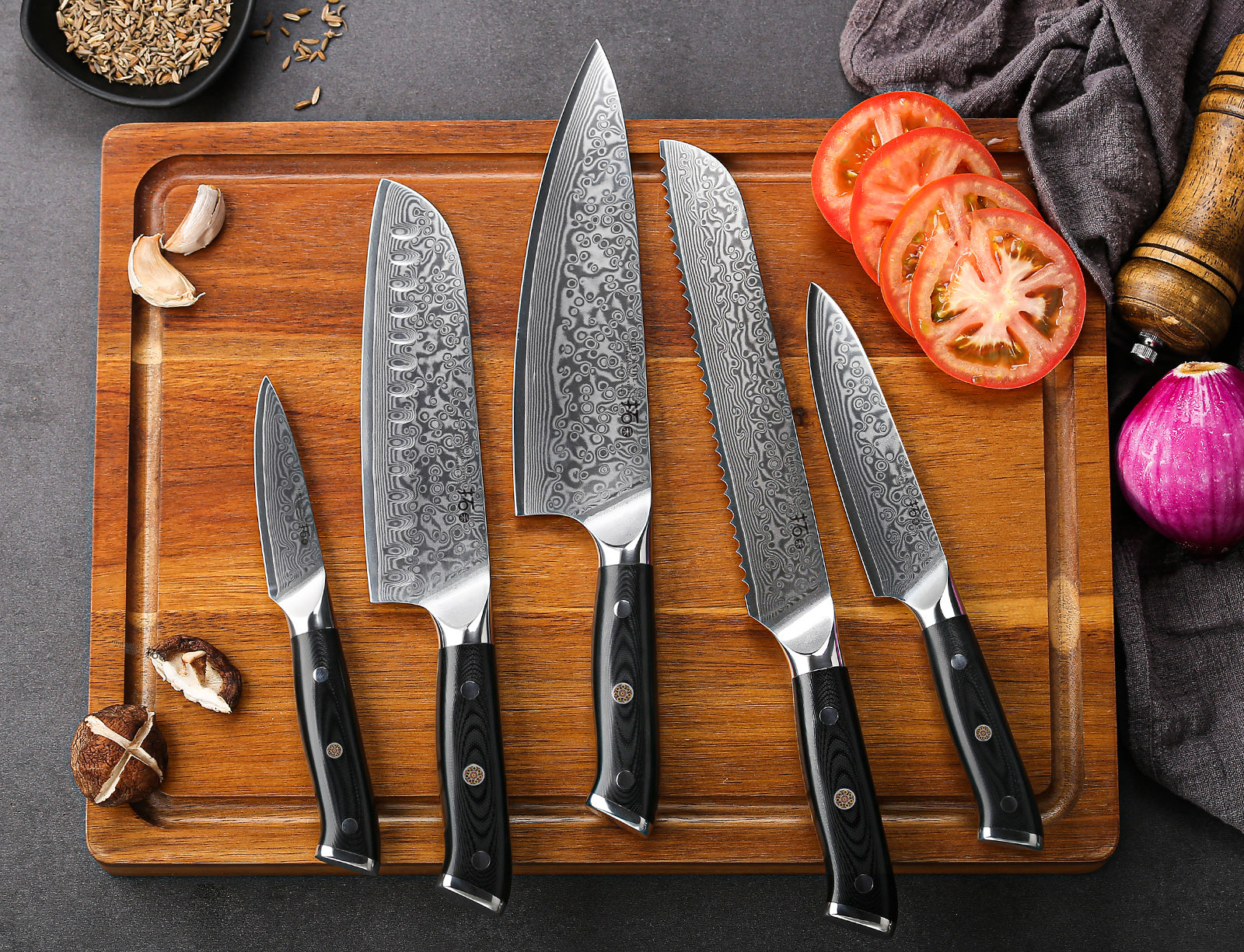If the blade is perfectly sharp, it will glide through the sheet of paper without serious pressure or scratching.
Under a microscope, you would see that the edge of a knife is made up of thousands of small cutting teeth. Through use, the fine teeth will eventually become misaligned, resulting in a dull knife. It is important to realign the teeth on a regular basis, aka honing, to renew the cutting edge.
The best way to sharpen Damascus Steel Kitchen Knives is to use a Whetstone.
Damascus steel is high-carbon stainless steel. Their hardness can reach 59-62 HRC that is harder than general steel.
This will let it 60-70% sharper than other knives. And the Damascus pattern makes these knives look awesome.

About Whetstones
Whetstone knife sharpening is by far the best method to sharpen your knives, but it takes time, practice, and skill to master. As with all abrasives, you’ll want to start with a lower-numbered (coarse) grit to remove steel and sharpen, and work your way up through the higher-numbered (finer) grits to fine-tune and clean up your edge.
1. PREPARATION
To sharpen, you can use a sharpening stone. Before using, immerse the stone in water for approximately five minutes. Then, place the non-slip side of the stone facing down into a wooden base. For best results, maintain the wetness of the stone throughout the entire process. A grey liquid is produced during sharpening. This is normal and improves the effectiveness.
2. ALIGNMENT
Now hold the handle of the knife firmly in one hand and, with the blade facing you, place it on the sharpening stone at an angle of 10 – 20 degrees. Make sure that there is a gap less than a 1/4 inch between the back of the blade and the sharpening stone. Place your free hand on the blade, but never directly on the cutting edge. We are pretty serious about this one. Touching the cutting edge can lead to some serious injuries so please be careful.
3. MOVEMENT
Now move the blade – with a little pressure – in regular strokes up and down across the sharpening stone. Always maintain the angle between the blade and the stone. You will notice a burr becomes visible after five or so strokes. Mentally divide the blade into three parts if the knife has a large blade. Always start with the tip and work back towards the bolster.
4. CHANGING SIDES
Now turn the knife so that the blade is no longer pointing towards your body. Continue to maintain the angle of 10 – 20 degrees and the gap of approx. 5 mm from the back of the blade to the sharpening stone. Slide the cutting edge up and down over the sharpening stone. Grind both sides of the blade alternately, around five to ten times on each side.
5. REMOVING THE BURR
To remove the resulting burr from the knife, draw the knife in a curve from top left to bottom right across the sharpening stone. Then hold the knife under running water to remove all residue and dry it carefully. Store the stone in a cool, dry place – away from direct sunlight.

You can find a lot of useful videos about how to use Whetstone on YouTube!
Leave a comment
Comments will be approved before showing up.



